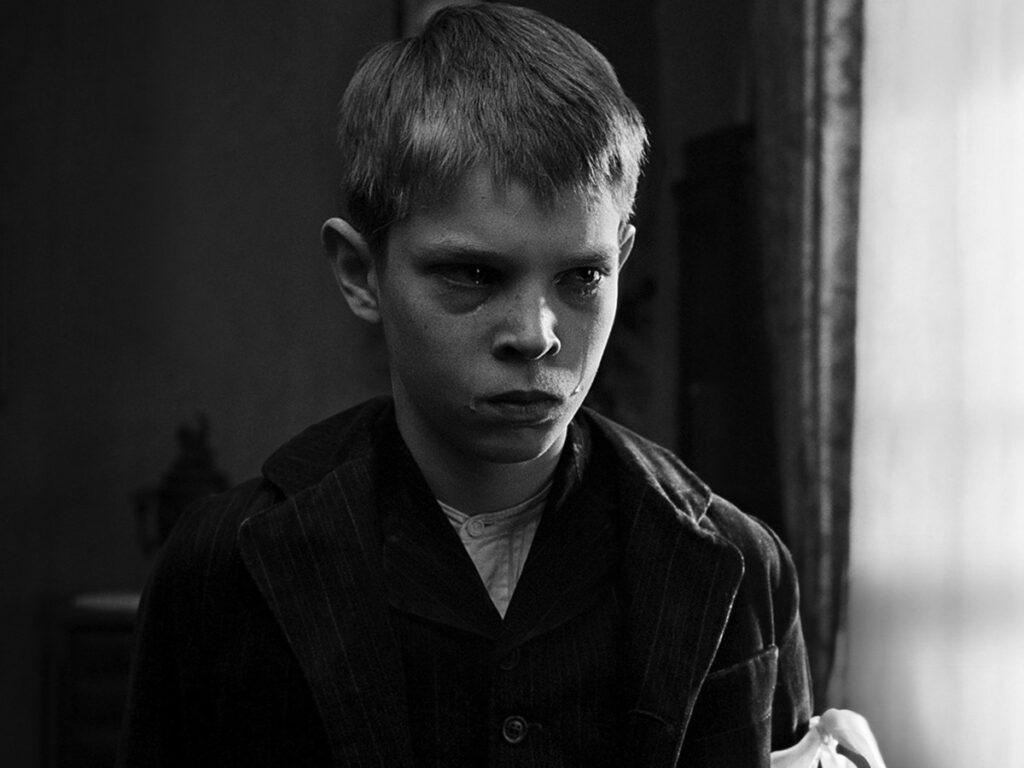From Phoenix (2014) to Ali: Fear Eats the Soul (1974), here are 9 German movies that should be on your watchlist.
German film constitutes a crucial part of the history of world cinema. It helped shape Hollywood cinema and had a major impact on films made in other parts of the world. The early German expressionist cinema was driven by romantic plots. Almost from the first days of motion pictures, both the Austrians and Germans were at the cinematic forefront, exerting great influence over the medium. Nine out of ten films until 1924 were more or less based on literature that dealt with romance. It is interesting to note that the history of German cinema is full of twists and turns.
The films made after the fall of The Third Reich mirrored the history of the country itself in many ways. At the same time the years following the end of World War II were full of uncertainty about the future of the country. It became a crucial theme that was reflected in German cinemas. But it is ironic that at present the importance of German films is generally forgotten in light of Germany’s historical role in world cinema. Here are 9 German movies that are essential viewing:
9. Phoenix (2014)

Collaborating for the second time with Harun Farocki and lead actor Nina Hoss, Christian Petzold carefully crafts this cleverly plotted, smothering, suspenseful post-World War II drama. The film is loosely based on Hubert Monteilhet’s 1961 novel Le Retour des cendres. Phoenix begins as a woman named Nelly Lenz ( Nina Hoss) with neither a home nor a face crosses the Swiss border back into the rubble of postwar Germany. After a stint in a concentration camp, en route to a facility Nina is left with the choice to rebuild herself before starting her life again in Israel.
The 98-minutes long narrative of the film is an impressive combination of throwback thriller and genre elements with substantial thematic weight. With Phoenix Petzold decided to move further back in history, leaving East Germany behind for Germany 1945, and asking what it takes to rise from the ashes in these desperate and confusing circumstances.
8. The Cabinet of Dr. Caligari (1920)

The Cabinet of Dr. Caligari was one of those earliest cinematic gems that generated emotions, fantasies and fears in the minds of the viewers after each screening. The story of the film feels like a nightmare. At a carnival, Francis and his friend Alan encounter the eccentric Dr. Caligari. He presents them the hypnotized Cesare, who can allegedly predict the future. Shockingly, he predicts Alan’s death, and by morning his prophecy comes true and Cesare and Dr. Caligari become prime suspects.
The Cabinet of Dr. Caligari was the torchbearer of the larger movement of German Expressionism into the cinematic realm. Filmmaker Robert Wiene unleashed a new strain of filmmaking with an intensely subjective power not seen before: the horror movie. The importance of this film lies in its capability with which all the elements of the mise-en-scène (lighting, set design, costume design, makeup, props, the movement of figures within the frame, etc.) have been deliberately distorted and exaggerated for expressive purposes.
7. Alice in the Cities (1974)

Alice in the Cities (1974) is the first part of Wim Wenders’ Road Movie trilogy. The other two include The Wrong Move (1975) and Kings of the Road (1976). In Alice in the Cities Philip Winter (Rüdiger Vogler) is a roving German reporter who, after a chance encounter with an elusive American woman, Lisa (Lisa Kreuzer) reluctantly accepts temporary custody of her daughter little Alice (Yella Rottländer). Their friendship grows while traveling through various European cities in search for the girl’s grandmother.
The odd pairing of a young girl and a strange grown man is presented from the point-of-view of the child and filled with wonder and complicated feelings. The treatment of the film indicates how much Wenders was influenced by American movies and pop culture. The film provides rare cinematic experience while delineating the inner conflicts and suffering of an individual set against the backdrop of human compassion. Wenders displays courage in exposing an aspect of contemporary reality of great social relevance.
6. Downfall (2004)

Downfall is set in 1942 and chronicles the final days of Hitler’s Reich. It is set almost entirely inside the claustrophobic confinement of a bunker far below the ruined streets of Berlin. The film unfolds through the perspective of Traudl Junge (Alexandra Maria Lara) who lands her dream job as secretary to Adolf Hitler at the peak of his power. Traudl narrates his final days as he rages against imagined betrayers while other infamous Nazis prepare for the end.
At the end of the film, two central characters, Hitler’s private secretary Traudl Junge and the young Hitler Youth soldier Peter (Donevan Gunia) ride on a bicycle into the sunset. This becomes a symbolic shot and suggests an innocence and rise to hope. It further emphasizes that though Germany and the Nazi regime is in tatters, they are ready to build a new Germany. It emphasizes German victimhood, and thereby follows the significant shift in politics of the country post-reunification Berlin Republic.
Watch Downfall on Amazon Prime
5. Das Boot (1981)

Wolfgang Petersen sets the plot of multiple Oscar nominated film Das Boot inside a German submarine assigned with the job of hunting allied ships during the Second World War. But a turn of events leads to the submarine itself being hunted. As the crew try to survive below the surface, they push the boat and themselves to unbearable limits. The treatment of the film showcases the psychological consequences on the lives of the millions of young officers and sailors who worked under the water.
Cinematographer Jost Vacano has shot the film with an absorbing veracity that captures the mundane claustrophobia with a realistic approach. The editing by Hannes Nikel is rarely boring and rivetingly structures the sequences of nerve-shredding tension. It is one of those rare films that gives a brilliant and truthful insight into the different personal problems, fears and feelings that those young men had to put aside in order to fight for the honor of their nation.
4. Aguirre, The Wrath of God (1972)

Werner Herzog’s masterpiece Aguirre, The Wrath of God, based on the legend of El Dorado, a land rich in gold, tempts Gonzalo Pizarro to lead an expedition beyond the Andes in 1560. Forced to halt, two men are sent downriver with a patrol. When their rafts are damaged, one decides to return to the camp, while Aguirre leads a mutiny and takes charge of the patrol.
The cinematic excellence of the film has influenced the likes of Coppola, Weir and Malick. Aguirre remains one of the most convincing of Herzog’s films in terms of narrative. There is little dialogue, and Herzog deftly structures the narrative from getting overly tangled up in the construction of a plot. Instead, the narrative is more or less a steady stream of images which not only sets the pace of the film but the mood as well, making it a timeless classic.
3. Our Hitler: A Film From Germany (1977)

Hans-Jürgen Syberberg’s Our Hitler: A Film From Germany looks at the rise, reign and demise of the Führer with a critical eye and doesn’t try to recreate history for the sake of entertainment. The mise-en-scène of the film enables the actors to play several roles on the stage. The milieu of the film is staged in a cavernous theater. The actors as well as occasionally puppets portray aspects of Adolf Hitler and other Third Reich leaders. They deliver beat-poet monologues that Syberberg swaddles in snippets of Wagner and intersperses with original Nazi radio broadcasts. The actors reenact events based on and inspired by the German dictator’s life.
Hans-Jürgen Syberberg made the film initially as a seven-hour 1978 experimental epic. But his treatment and style is never stagy: His skill at layering sound, densely packed frames and meticulously arranged elements within the frame transfixes the viewer. Syberberg’s film could be a phenomenal pretentious touchstone. He displays a naturalistic, documentary style of presentation. It’s no wonder that Francis Coppola acquired the film for American distribution.
2. The White Ribbon (2009)

Michael Haneke’s Palme D’or winning The White Ribbon, is set in a rural German village in 1913, where brutal authority was enforced by the baron and the pastor. Malevolent occurrences involving the upper class gradually take on the character of a punishment ritual. Haneke has structured the screenplay partly as a deconstructed mystery and partly as a clinical observation on society.
Christian Berger’s black-and-white cinematography with neutral framing insightfully reflects the spectrum of social division. Issues such as wealth, age, gender, education, spirituality, moral conscience equally serve as a historical document for pre-war Germany and contemporary allegory for religious extremism. Each segment of the film is like a piece of conventional storytelling. The plots are arranged like beads of stories strung together by Haneke’s acumen and not held together with the logic of storytelling. Though there is a sense of chronology within the narrative, it is constructed in a way that the viewers find themselves in a maze. Haneke displays precision in structuring a very complex narrative with a superb control over direction.
1. Ali: Fear Eats the Soul (1974)

Rainer Werner Fassbinder’s Ali: Fear Eats the Soul is the tale of an almost accidental romance that is kindled between a German woman Emmi Kurowski (Brigitte Mira) in her mid-sixties and a Moroccan migrant worker Ali (El Hedi ben Salem) around 25 years younger. Though they are separated by age and race yet they decide to marry, appalling the society.
The film follows a classical form, style and genre but the treatment pushes the length of every shot with a cinematic style that enhances the grammar of filmmaking to new heights. The language of the film goes beyond conventional narrative in its poetic exploration of human and social realities. Fassbinder’s command over the film provides a rare cinematic experience while delineating the inner conflicts and suffering of an individual set against the backdrop of racism. Over a period of time, the film has achieved a cult status for its poetic presentation and exploration of complexities in human relationships in contemporary Germany. Martin Scorsese included it in his list of ‘39 Essential Foreign Films.’
Conclusion
Every year a bevy of films strive to tackle new concerns and do away with the old aesthetics of German cinema to a certain extent and can be christened as the harbingers of a new movement. But for a movement to be successful there should not only be a cumulative shift in the ideology, aesthetics, modes of finance, production, and distribution of films, but also of audience appreciation. The contemporary German cinema is distinguishable from the earlier film for several reasons. The most relevant of which is the issues and themes it concerns itself with. Contemporary German films are remarkably plural in style — abstract, disjointed, classical and expressionistic at the same time. Here’s awaiting more surprises from these new breed of filmmakers in the future.




